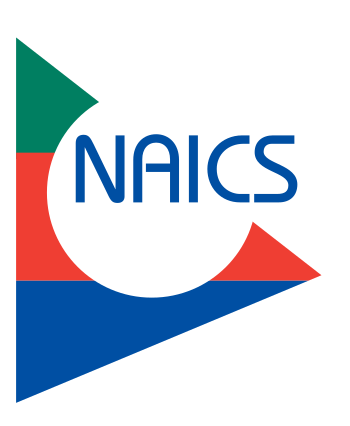Almost from the beginning, this year's Professional Abatement Contractors of New York (PACNY) Environmental Conference seemed to be different from previous years. There was a certain buzz about the conference even downstate. Usually, we are the only one discussing the conference. However, this year we found several people discussing the conference and several others saying they were attending at least the first day of the conference. Well that buzz definitely turned into a well attended conference. The new Wednesday session had 70 attendees with 30-40% of them staying for an additional day. The total conference attendance was up 50% and the exhibit hall was at full capacity which was 18% increase over last year. We always have fun at these events, and this year was no different.
 |
| View from the Tower at Turning Stone Resort & Casino |
The venue,
Turning Stone Resort & Casino actually improved over last year with some new restaurant choices. TS Steakhouse was fantastic, the Tin Rooster a barbeque restaurant was very good, and the Upstate Tavern specializing in locally sourced food and drinks was excellent.
 |
| Annual Certificates/Students Slide from Mr. Malone's Presentation |
The new first day of the conference, was advertised for training providers and trainers, featuring Mr. Kevin Malone, Director of the Asbestos Safety Training Program. The session started with Mr. Darren Yehl & Mr. Kevin Hutton from Cornerstone Training discussing "What are we telling our clients?". This discussion featured
audience participation with a
Classroom Performance System that allowed the audience to answer the questions on the screen and then tallied the results. This session definitely determined one thing, the information provided in training is all over the place. Based on the responses it would seem that the trainers need training. This was probably very eye-opening for Mr. Malone. Mr. Bill Self's presentation "High Impact Presentations" definitely gave us a lot to think about and had us thinking how we can improve our presentations. Mr. Malone's presentation was informative and it was interesting seeing the
asbestos training business increasing (it is our opinion the increase is coming from those retiring out of the asbestos industry and having to replace them). It was also interesting, however, though not unexpected how few asbestos management planners there are (for 2013, there were 24 initials and 134 refreshers in the management planner title. Compare that to 101 initials and 333 refreshers in the inspector title).
 |
| Dave Pannucci of Seneca Meadows Landfill |
The next two days was the typical Environmental Conference and the presenters/presentations were all informative and some were more entertaining than others. The first presenter was Mr. Craig Benedict,
Assistant US Attorney in the
Northern District of New York discussing some of the various asbestos related cases (100 prosecutions over 15 years) and the process of investigating environmental crimes (the cases are won before the trial even happens). Why is it when he talks you feel like crawling under the table? Mr. Dave Pannucci's, of
Seneca Meadows Landfill, presentation regarding the handling of friable and nonfriable asbestos waste was very interesting since we don't usually hear about how asbestos is handled at the landfill. Dr. Marty Rutstein's, from New Paltz Geology Department, presentation "All About Amphiboles" was very interesting and helped us realize how the science has progressed so far ahead of the regulations in this industry. His discussion on transitional fibers and bio-reactivity of fibers were eye opening. Mr. Tom Stebbin's, of the Lawsuit Reform Alliance of New York, presentation regarding the scaffold law was very interesting and the statistics are very compelling. Though we would agree with some in the audience who thought for such a controversial issue it would've been nice to hear from someone from the counter point. Mr. Tom Laubenthal, from the Environmental Institute, discussed "Methods for Asbestos Sampling & Analytical" who dropped a bomb shell regarding the minimum volume for clearance sampling under the
National Institute of Occupational Safety and Health (NIOSH) 7400 methodology being between 3,000 to 10,000 liters based on loading. The final presentation was Mr. Steve Fess from Xerox discussing "Getting Your Foot in the Door" providing a private client's perspective of developing lasting partnership with customers.
 |
| Roundtable Discussion |
The second day started with Mr. Paul Watson, of the Center for Toxicology & Environmental Health, presenting "A Regulatory Update in Renovation, Restoration, & Abatement" discussing the new silica standard (the proposed new action level of 25 micrograms/cubic meter and permissible exposure limit of 50 micrograms per cubic meter) and other things on the horizon. Unfortunately, because of the weather Dr. Barry Castleman could not make it, so Dr. Marty Rutstein replaced with a presentation "Are We Hugging the Trees to Death", which was funny and entertaining. The Roundtable Discussion added levity with a fictional contractor defending some of the data we were discussing. The final presenter was Dr. Eileen Franko (hopefully we spelled that right) the Director for the Division of Safety and Health with the New York State Department of Labor (NYSDOL). Dr. Franko discussed the NYSDOL's initiative to educate code enforcement officers across the state, their attempt to remove the 1974 cut off in the Industrial Code Rule 56, and changes to the notice of violation system (including considerations for history, gravity, & good faith).
 |
| Moonglo Light at the DiVal Booth in Exhibit Hall |
The Exhibit Hall was sold out this year, and the Thursday night reception and networking allowed us to discuss the conference with some of the new people who attended the conference. We were glad to hear that almost all were impressed with the conference and enjoyed all parts of the event. In addition, in the Exhibit Hall we enjoyed seeing all the usual equipment and some new equipment that is available from Aramsco, DiVal Safety, The Safety House, Grayling Industries, The Duke Company, Admar Supply Company, Fiberlock Technologies, Inline Distribution, Novatek Corporation, and Vermeer. Honeywell Safety Product's booth was interesting with all the different safety equipment they supply (we thought Honeywell was a security and energy company). We thank all of you who came by our booth and introduced yourself to Ms. Kimberly Granmoe and Ms. Sheryl Esposito who were handling our booth duties. A big Thank You to Ms. Granmoe & Ms. Esposito for adding a woman's touch to our booth and helping us spend more time meeting and talking with the attendees. PACNY should be very happy with the success of this year's event. Though, the bar has been set very high in trying to make next year's event even better. For more photos from the Conference visit Future Environment Design's
Picasaweb Album.



.png)









































